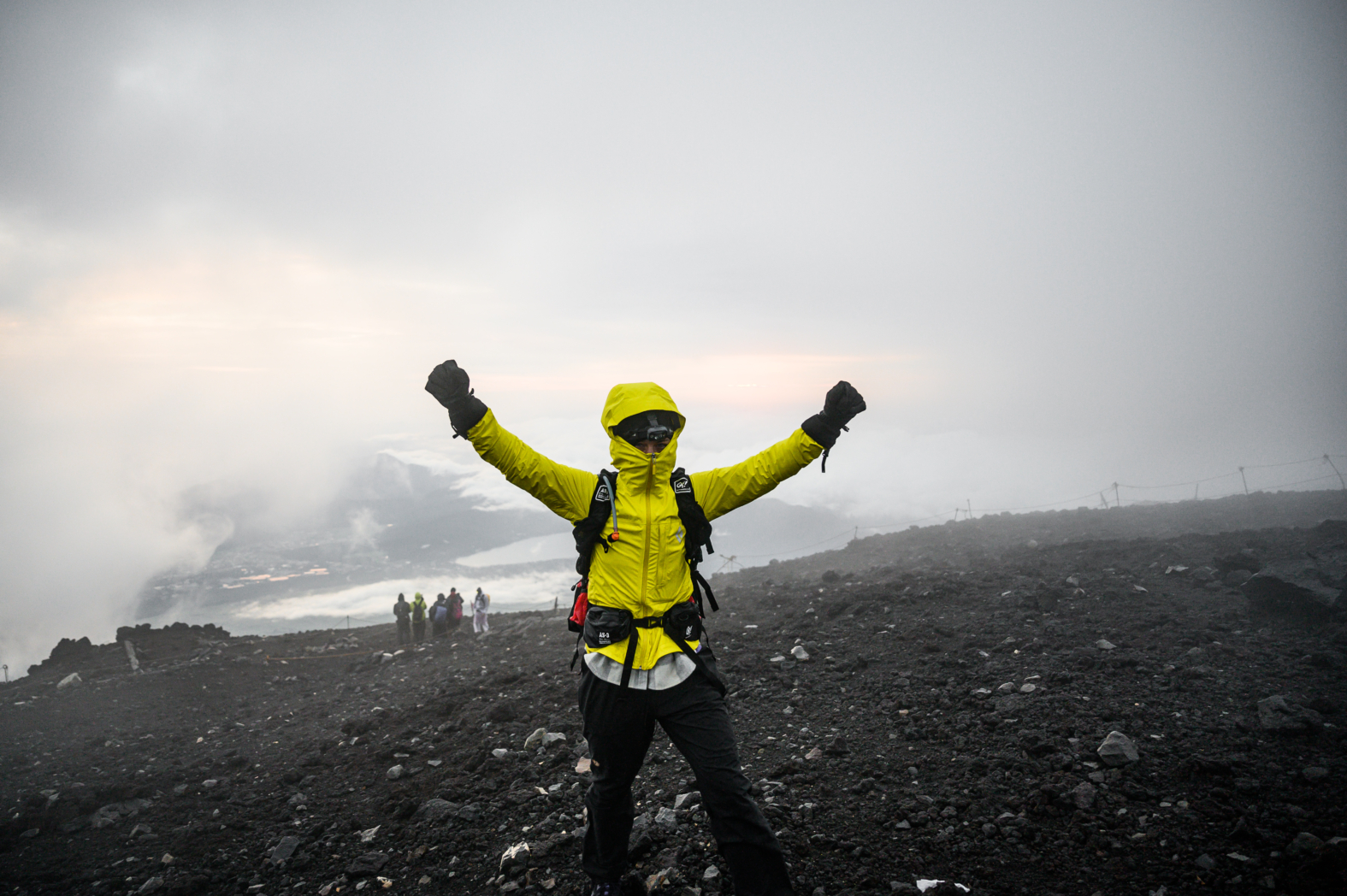
Hello adventurers!
I’ve climbed another mountain! And it’s not just any mountain. It’s Japan’s highest mountain. It’s an icon. It’s an active volcano. It’s a 3776 meter high beast that is easily conquered in two days in good weather. However, it’s a bigger deal when the weather is bad.
As you know, we picked Japan as our last training place for Eco-Challenge (during which we managed a few sights in Tokyo, Kyoto and Osaka). The hike to Fuji was part of that training.
But because we are not made of sugar and we were about to participate on the hardest race in the world a few days later, we decided not to hike, but to run to Fuji.
Preparation for the climb
Climbing Fuji is in most cases a two-day matter. Some people do it in a day, but high altitude illness can’t be underestimated. I’m speaking from my own experience with Kilimanjaro, so we also reserved two days for the climb.
There are four main routes to Fuji – Yoshida, Subashiri, Gotemba and Fujinomiya. On each route you will find several evenly spaced stations with mountain huts. Before you start climbing, you need to pick one of the four routes and book a hut approximatelly halfway up. If you can’t speak Japanese (haha), you have to make a reservation through an agency that will arrange the accommodation for you for a small fee.
We chose the easiest route called Yoshida Trail, which has the most mountain huts along its route. We booked a hut called Fujisan Hotel, located in the 8th station, in 3400 meters. We paid 2.000 yens/2 pers. There is also the possibility of warm dinner and take-away breakfast. But don’t expect any luxury, the huts are equipped with narrow bunk beds and filled with snoring and stinking Chinese. You don’t have to carry your sleeping bag with you, they lend you their smelly blankets.
Also, be careful when you plan to go to Fuji because the season ends in early September. We were there on August 28th, which was the last possible day to start the climb.
How to get to the starting point?
We parked our car in the Fujisan Station parking lot a little bit after noon, from where we switched to a mountain bus (also for a fee). You can’t drive to the starting point, so a bus is the only option.
The bus took us to the 5th Station named Fuji Subaru Line(2305 meters). At the 5th station you’ll find a restaurant, a souvenir shop and toilets.
And then you have to use your own feet. That’s where the fun begins.
Running to the top of Fuji in a TYPHOON
It wouldn’t be a real adventure if it was 20°C & sunny. There was a serious typhoon on Fuji, but we were determined and motivated.
The combination of icy rain and wind at a speed of 80-100 km/h was not ideal for the ascent or perfect photos, indeed. But it had one huge advantage. There weren’t so many people. Yoshida is the easiest and therefore the busiest route, so it’s no exception that in some places you wait in a line. This rarely happened to us, but when it did, we passed this line off the path through huge slippery lava boulders.
We got to Fujisan Hotel after about 3 hours – frozen and soaked. According to the internet, it’s supposed to take about 5 hours to the 8th station. We had a quick bite to eat and went into our beds. It took me about an hour to start feeling my fingers again. The temperature at 8th station was -8°C in the evening.
Of course, we didn’t sleep much, and by 2AM, we were already heading towards the summit. You should be on the summit at sunrise in order to get back to the 5th station in the daylight.
It took us about an hour to get from the 8th station to the top of Fuji. We didn’t expect ourselves to get there so soon, so we had to wait for the first rays to appear, in the typhoon, snuggled in our jackets. It could’ve been like -12°C, but thanks to the wind and being soaked again, it felt like -25°C.
When the sun finally showed up, we set out to explore the summit, but the wind was so strong that it was impossible to walk. So we crawled on all four to at least take a summit picture with the little wooden torii gate. I’ve never experienced such a wind, I felt like I was going to fly away. There’s volcanic sand and small stones at the top, which were flying around, stabbing our faces like a billion knives.
Right after sunrise, we started descending. We reached the 5th station after about 2 hours. So in total, it took us about 5 hours instead 10.
And impressions?
Uaaaaaah !! We just ran to the highest mountain of Japan! In 4 hours we covered 1471 meters of elevation gain!!!! It was one of my best sports performances ever. I would certainly repeat it again, this time I would take it from a completely opposite direction. I would choose the longest, hardest and least crowded route. I’d take my drone, stabilization, cameras and all lenses with me. And I’d take it very easy. I think both of these styles (sprint vs. chill) are a great experience, so it doesn’t really matter which one you choose.
If you are interested in anything about Fuji, don’t hesistate to ask! 🙂
E.





















